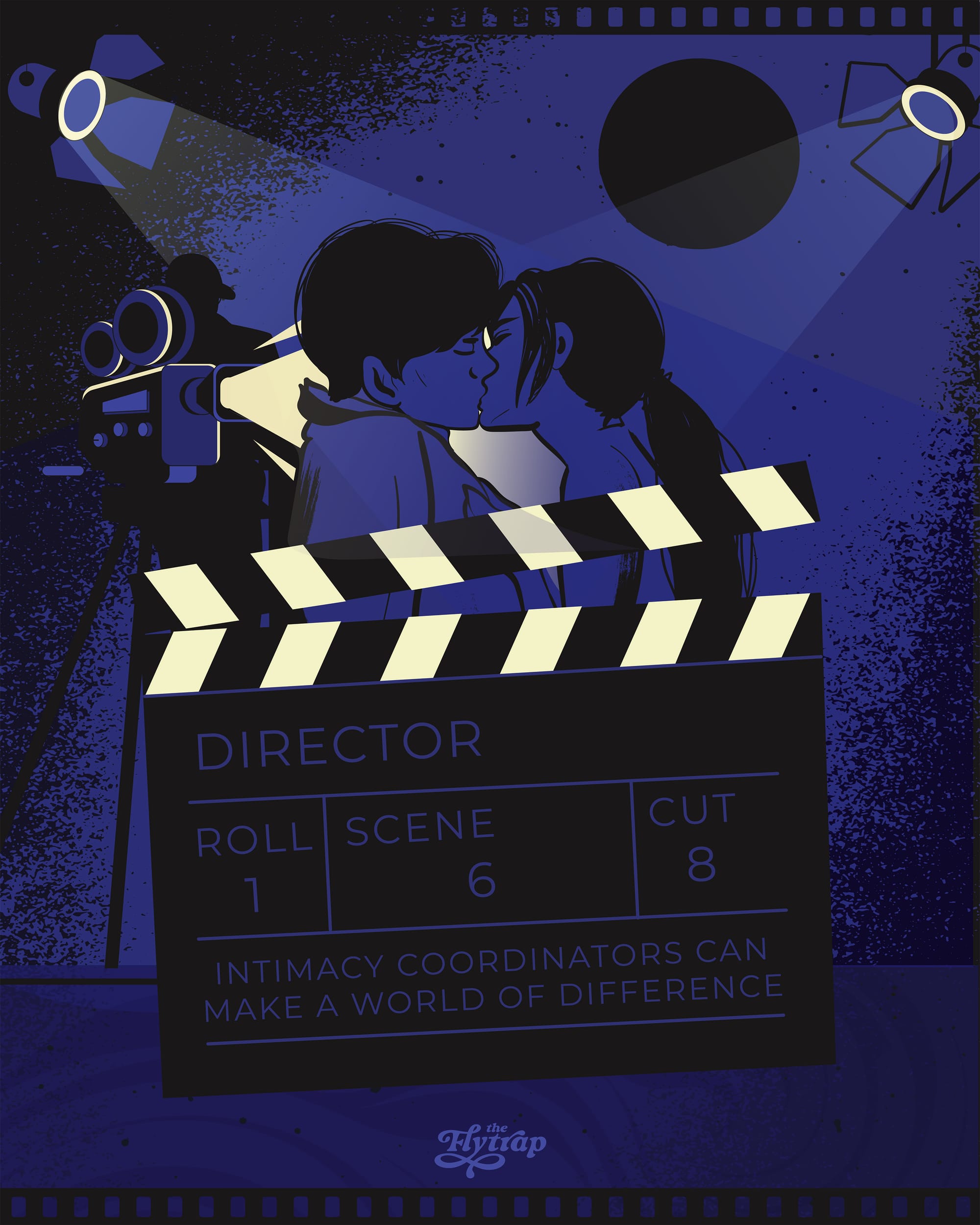Eight Years After #MeToo, the Intimacy Coordinator Backlash Has Arrived
Intimacy coordinators were supposed to make sets safer. Instead, they've become a flashpoint.

Feminist journalism is an endangered species, but The Flytrap is getting ready to celebrate one year of biting back! When we say “fuck the algorithm,” we mean: fuck corporate media, fuck self-censorship, and most importantly:
🖕🏻🖕🏼🖕🏽🖕🏾🖕🏿 fuck yeah we do what we want 🖕🏿🖕🏾🖕🏽🖕🏼🖕🏻
You’re backing feminist media right now just by reading The Flytrap! To level up your support for our worker-owned coop, click the button below to become a member, or drop us a few bucks in the Flytrap tip jar.
In 2019, one week after actor and director Fae Hartt turned 18, they were told they needed to be topless onscreen just an hour before filming began. "There was no intimacy coordinator and it was really uncomfortable," Hartt tells the Flytrap, saying that a member of the crew started sending her messages that were “so uncomfortable. It was one of my first on-camera experiences as an adult—barely an adult." When Hartt directed their first short film five years later, hiring an intimacy coordinator was an obvious choice. "I really, really want to make sure that actors, especially young adult actors, are feeling taken care of and safe on film sets."
The role of intimacy coordinator on film and TV sets is still a relatively new one. Although the job has a longer history in theater, it was introduced to the TV and film world in 2017 in part as a response to the widespread sexual abuse accusations revealed by the #MeToo movement. On a film or TV set, intimacy coordinators work with actors to coordinate scenes that involve sex and nudity in the same way they might a fight scene or dance scene; the professional organization Intimacy Directors and Coordinators (IDC) describes the role as a combination of choreographer, advocate, and liaison. The role spread rapidly, from HBO sets to Netflix to Amazon Prime productions, while what, exactly, it involved was still being developed. Eight years into its existence, the intimacy coordinator role is still evolving. Still, despite recent backlash, it remains a vital part of the film industry.
